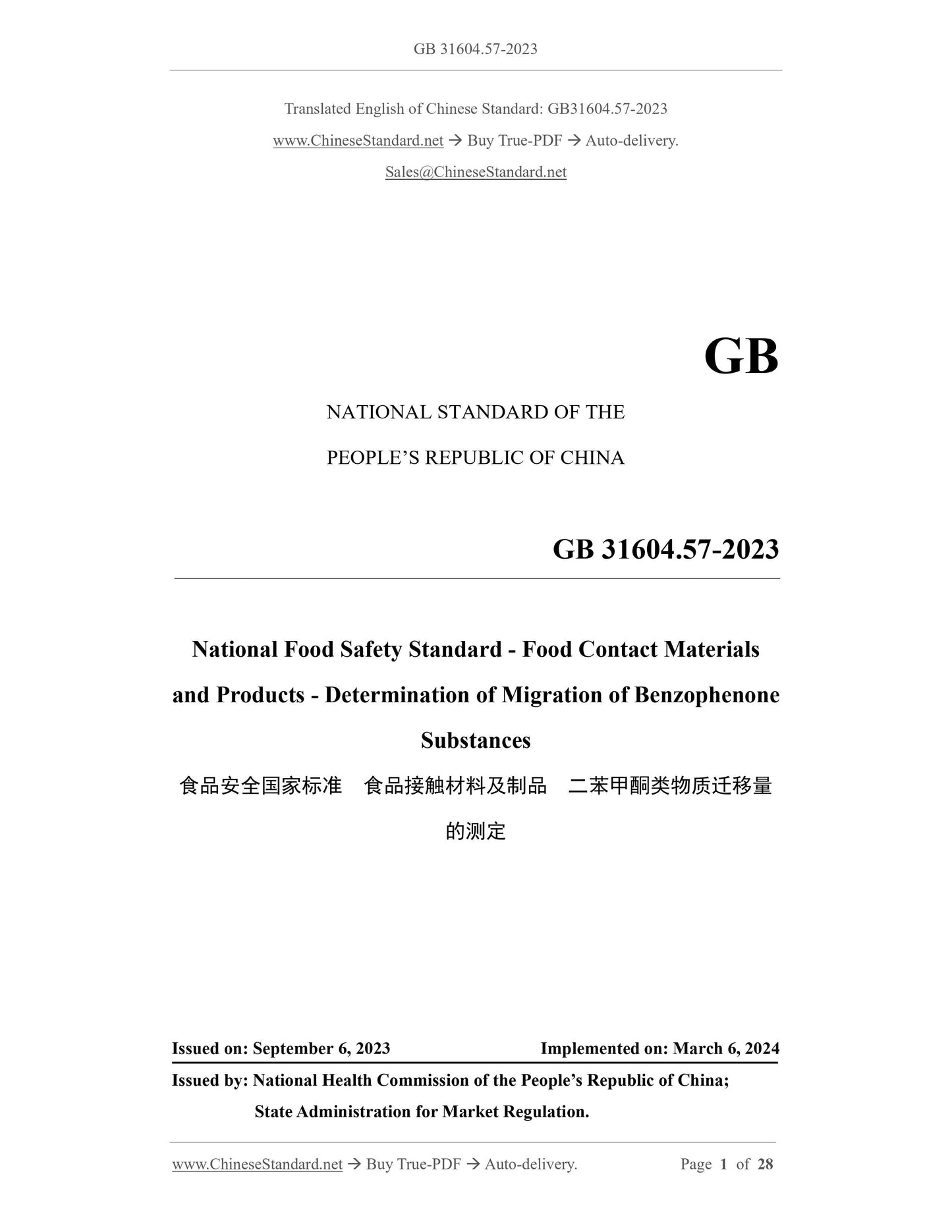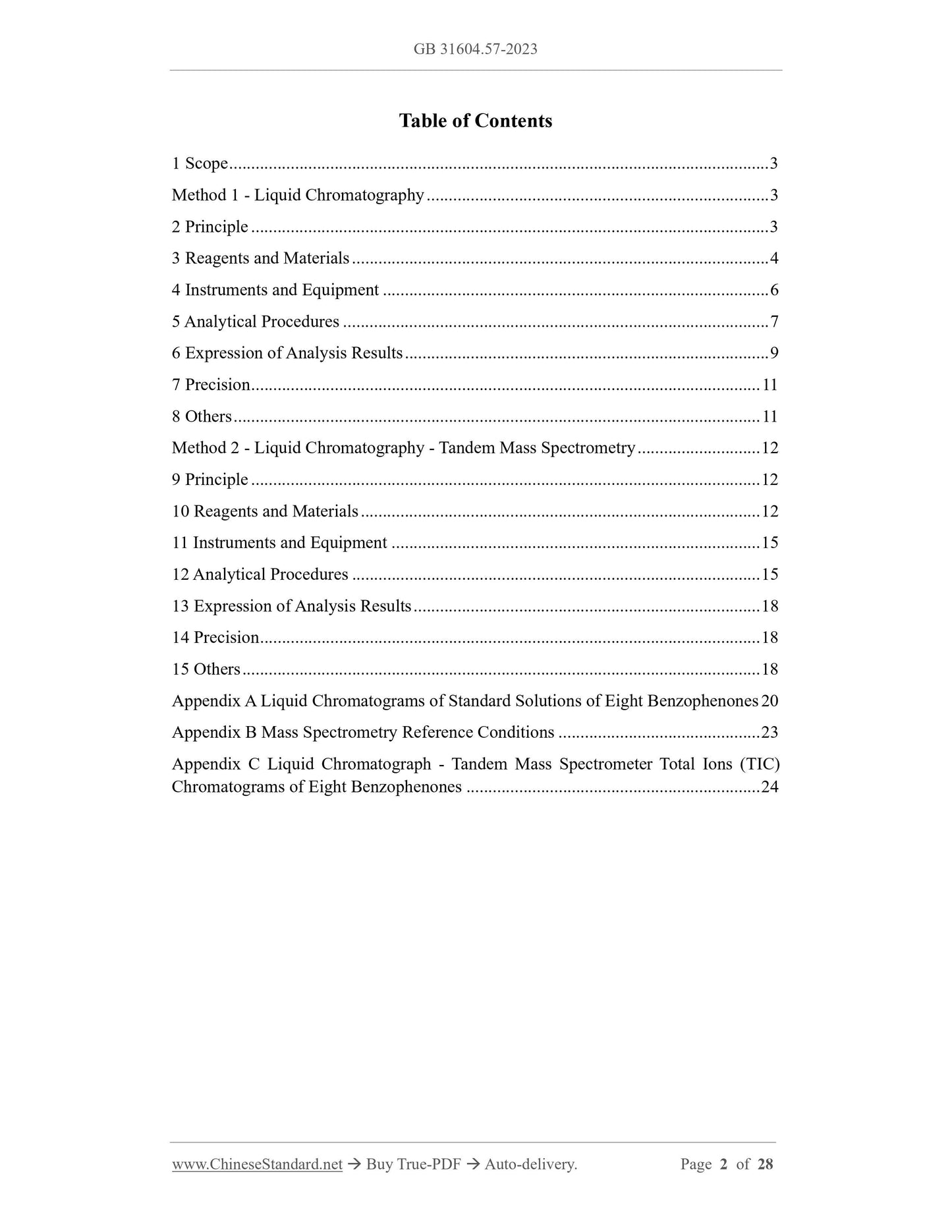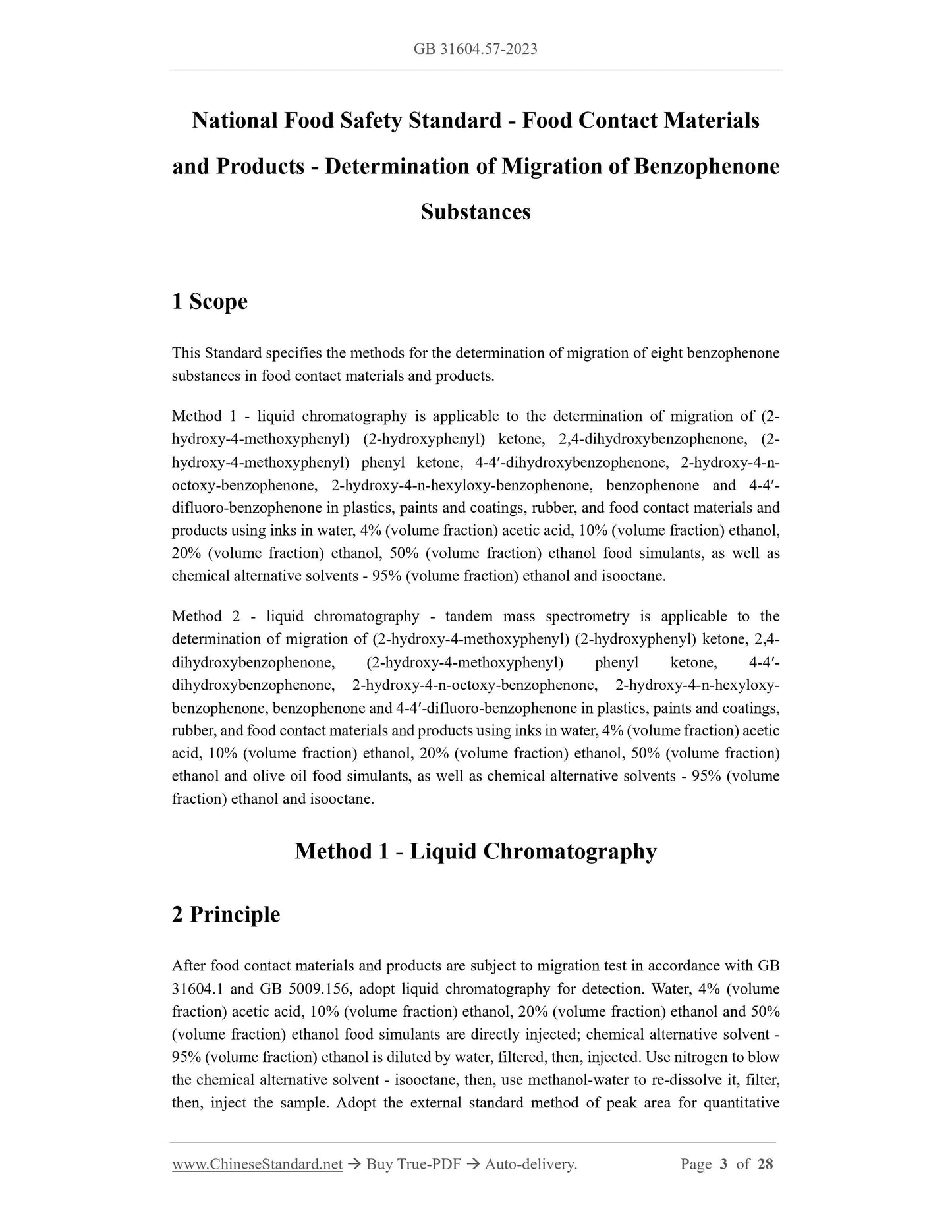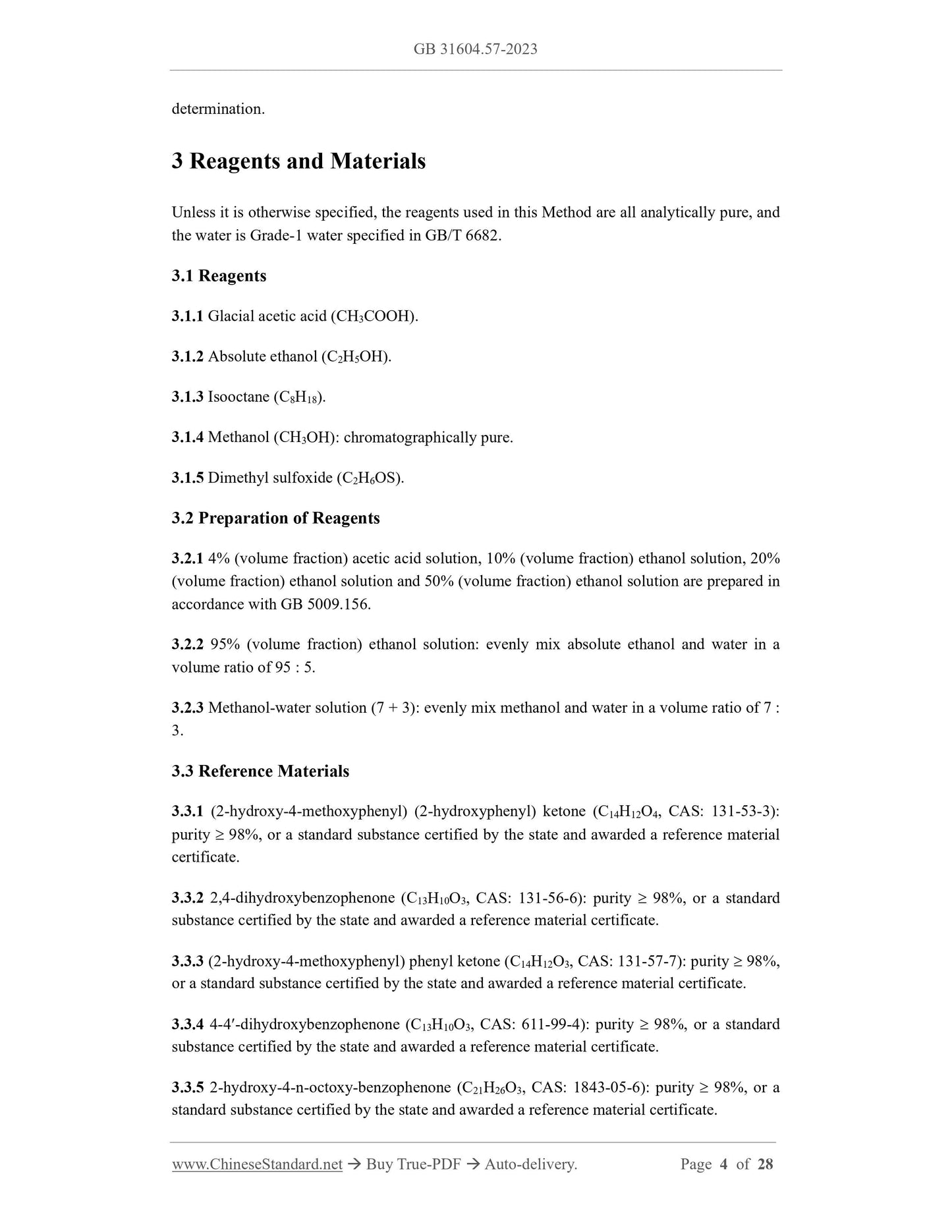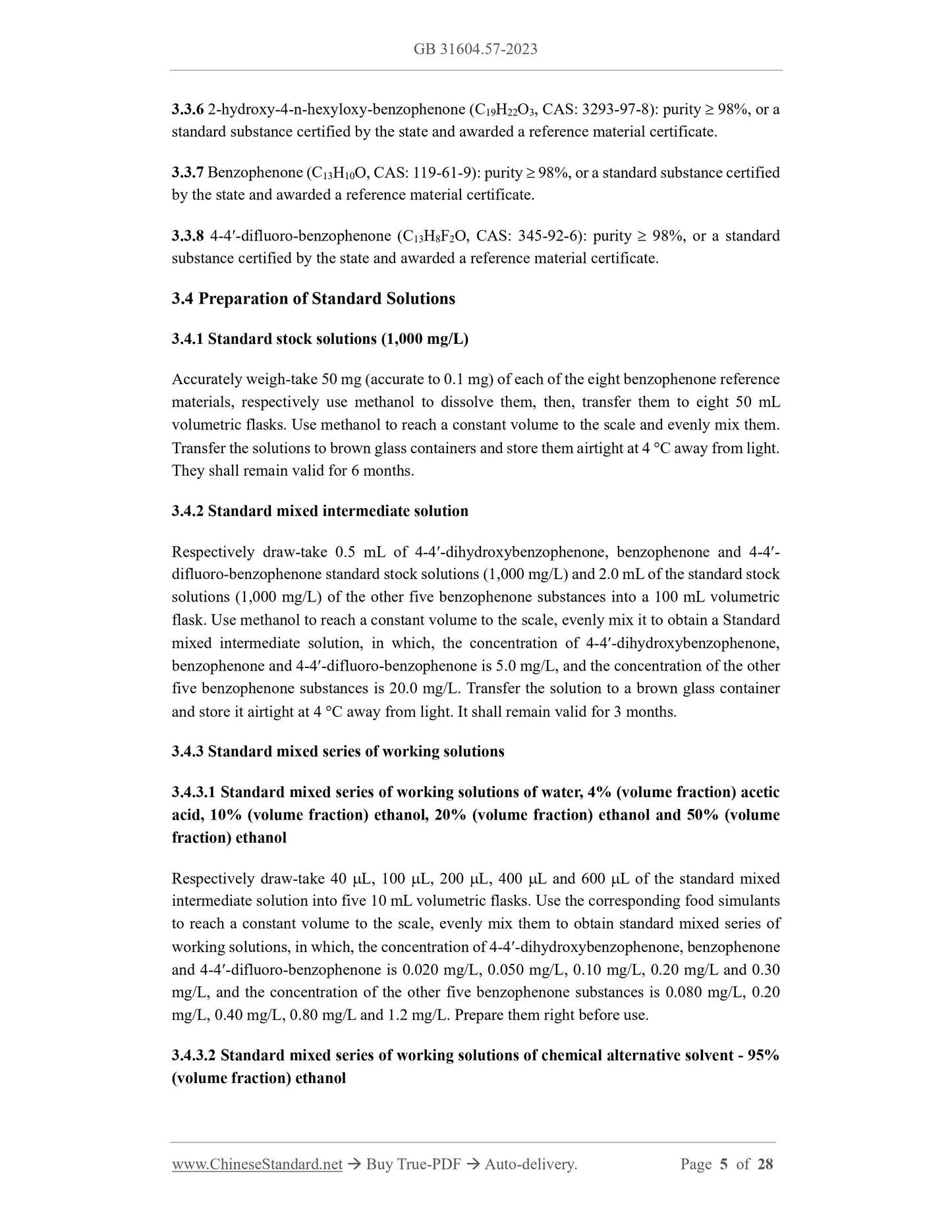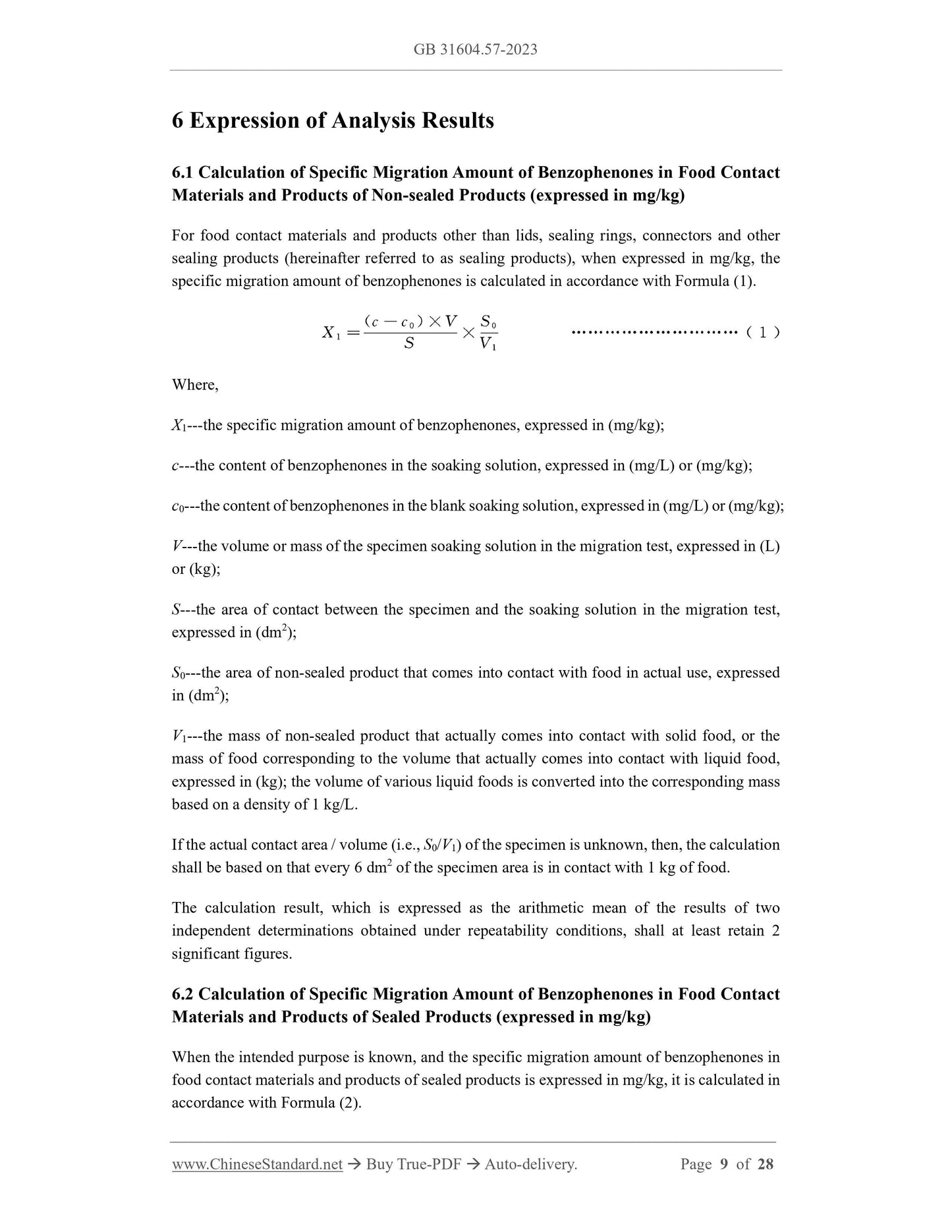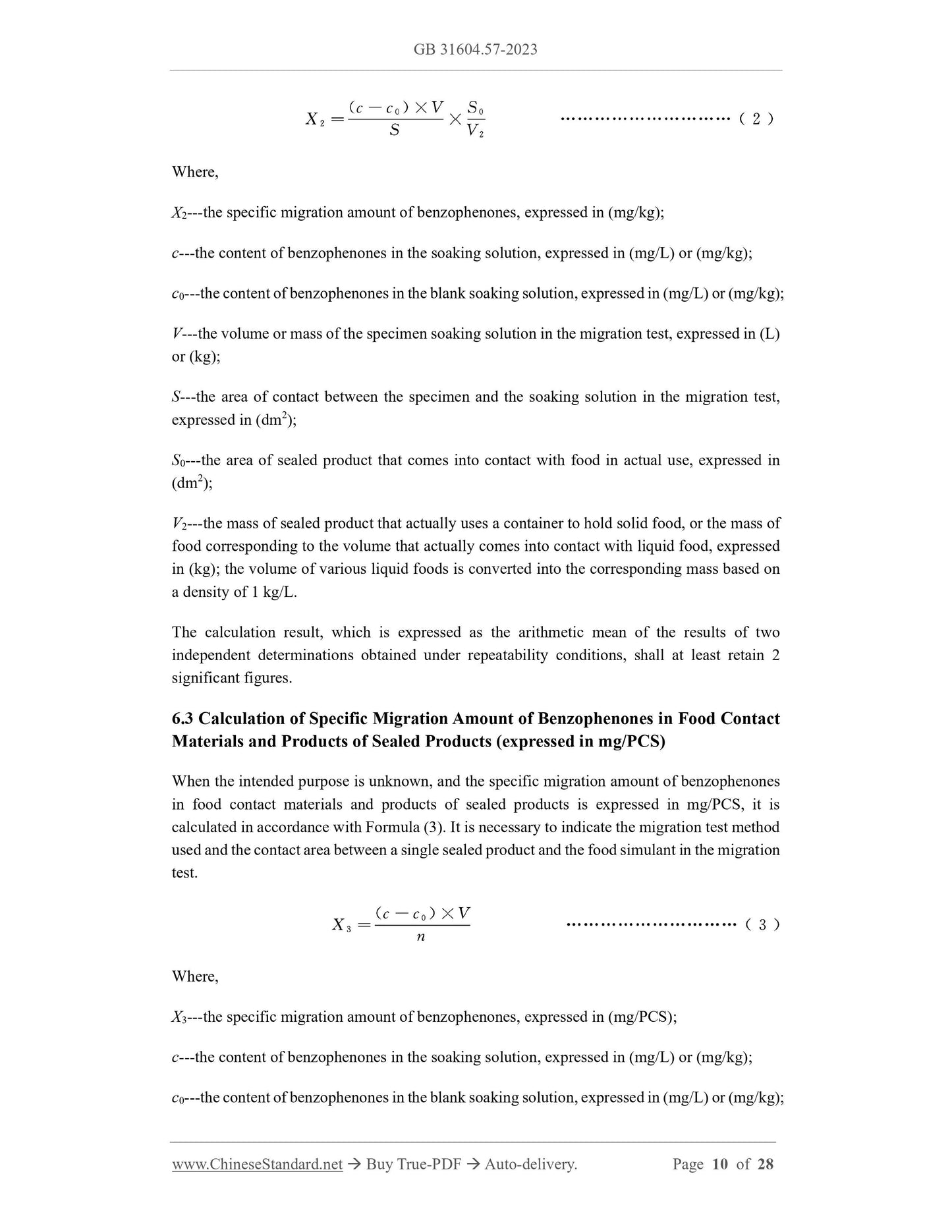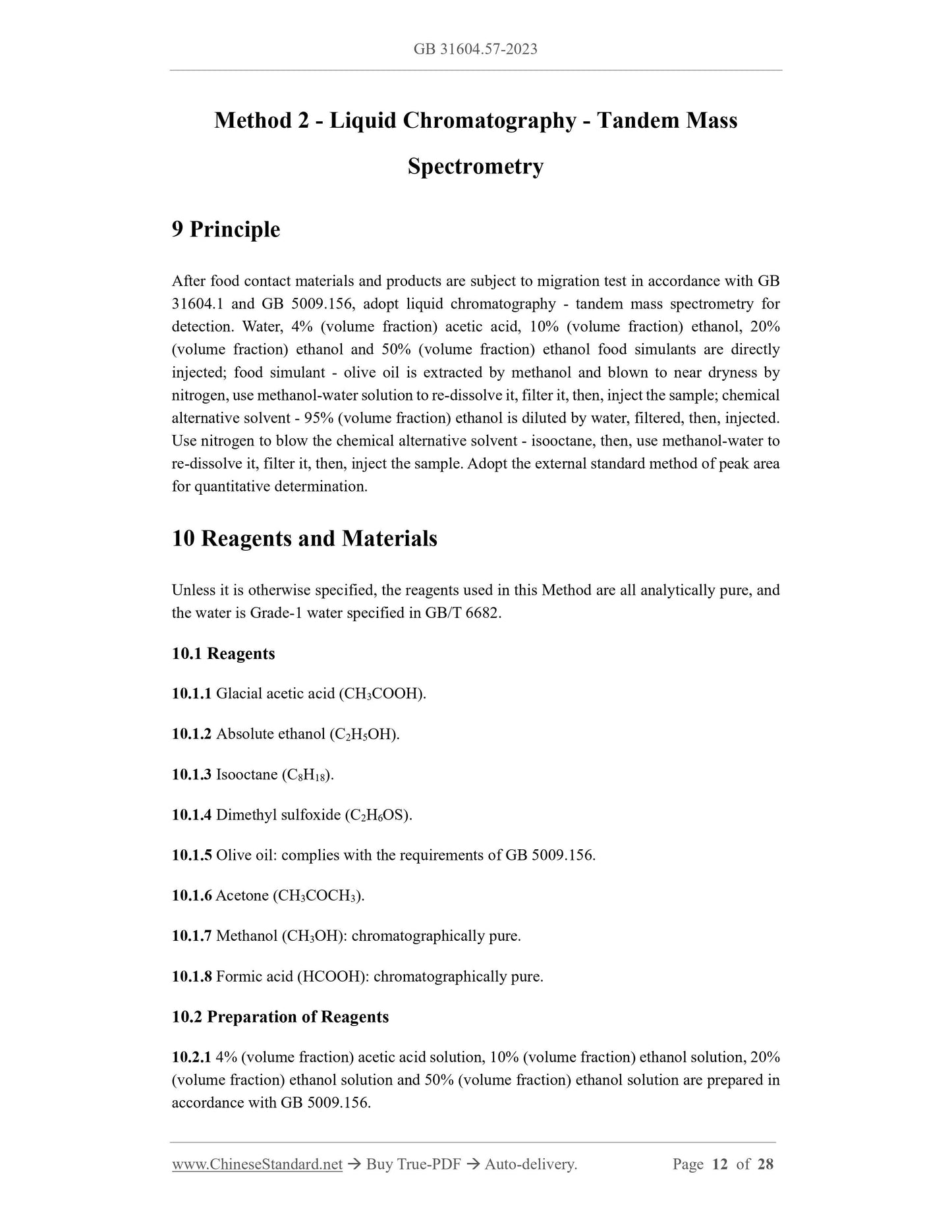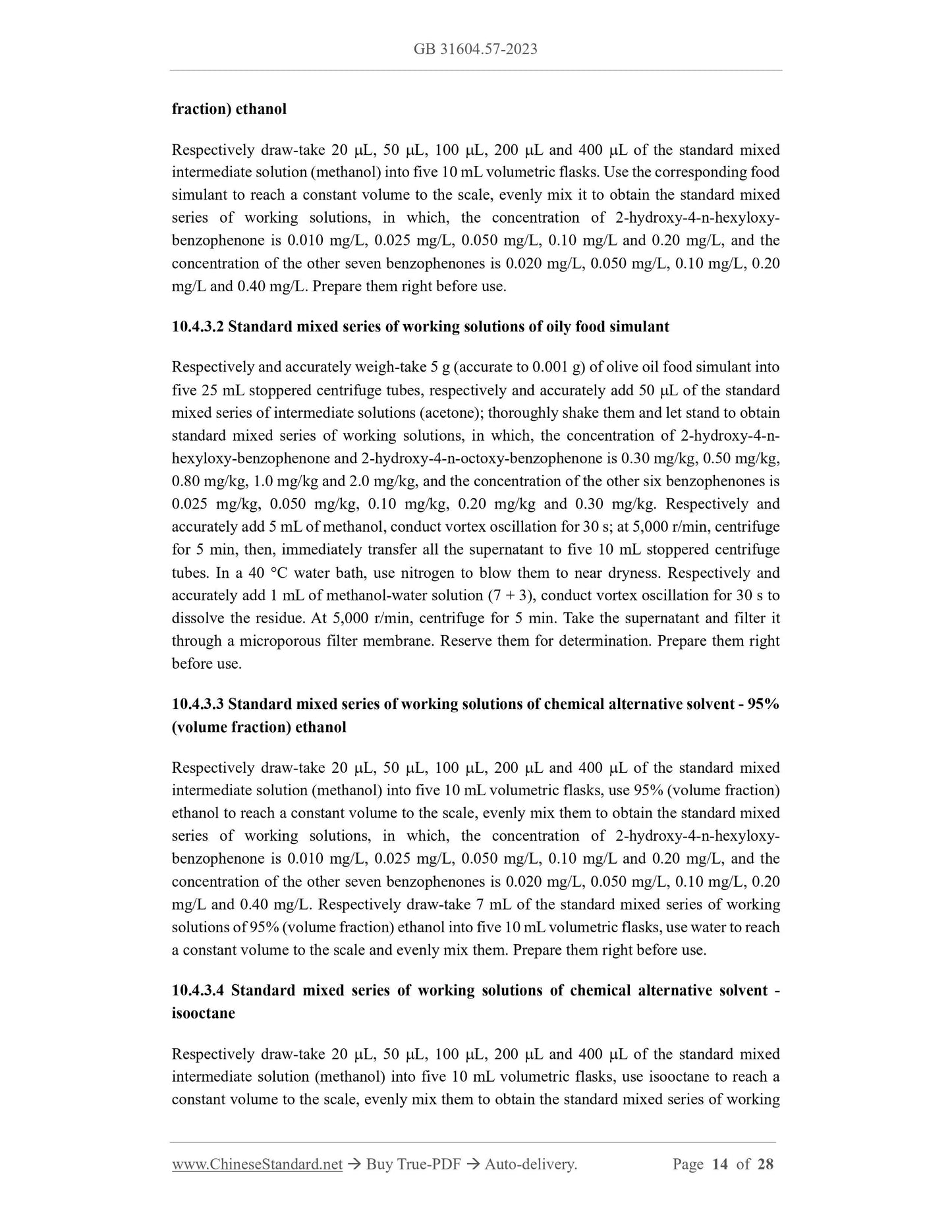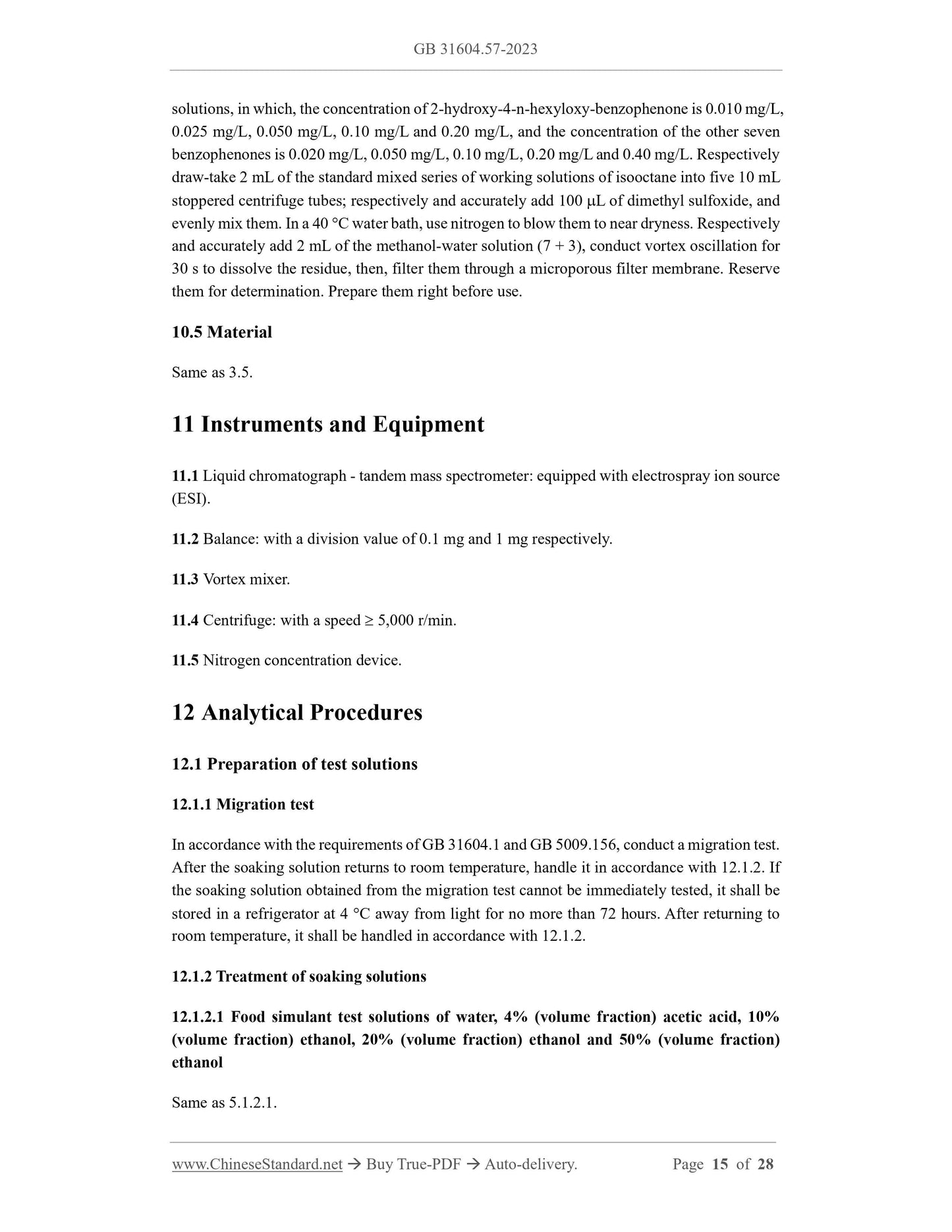1
/
of
11
www.ChineseStandard.us -- Field Test Asia Pte. Ltd.
GB 31604.57-2023 English PDF
GB 31604.57-2023 English PDF
Regular price
$335.00
Regular price
Sale price
$335.00
Unit price
/
per
Shipping calculated at checkout.
Couldn't load pickup availability
GB 31604.57-2023: National food safety standard - Food contact materials and products - Determination of migration of benzophenone substances
Delivery: 9 seconds. Download (and Email) true-PDF + Invoice.Get Quotation: Click GB 31604.57-2023 (Self-service in 1-minute)
Newer / historical versions: GB 31604.57-2023
Preview True-PDF
Scope
This Standard specifies the methods for the determination of migration of eight benzophenonesubstances in food contact materials and products.
Method 1 - liquid chromatography is applicable to the determination of migration of (2-
hydroxy-4-methoxyphenyl) (2-hydroxyphenyl) ketone, 2,4-dihydroxybenzophenone, (2-
hydroxy-4-methoxyphenyl) phenyl ketone, 4-4-dihydroxybenzophenone, 2-hydroxy-4-n-
octoxy-benzophenone, 2-hydroxy-4-n-hexyloxy-benzophenone, benzophenone and 4-4-
difluoro-benzophenone in plastics, paints and coatings, rubber, and food contact materials and
products using inks in water, 4% (volume fraction) acetic acid, 10% (volume fraction) ethanol,
20% (volume fraction) ethanol, 50% (volume fraction) ethanol food simulants, as well as
chemical alternative solvents - 95% (volume fraction) ethanol and isooctane.
Method 2 - liquid chromatography - tandem mass spectrometry is applicable to the
determination of migration of (2-hydroxy-4-methoxyphenyl) (2-hydroxyphenyl) ketone, 2,4-
dihydroxybenzophenone, (2-hydroxy-4-methoxyphenyl) phenyl ketone, 4-4-
dihydroxybenzophenone, 2-hydroxy-4-n-octoxy-benzophenone, 2-hydroxy-4-n-hexyloxy-
benzophenone, benzophenone and 4-4-difluoro-benzophenone in plastics, paints and coatings,
rubber, and food contact materials and products using inks in water, 4% (volume fraction) acetic
acid, 10% (volume fraction) ethanol, 20% (volume fraction) ethanol, 50% (volume fraction)
ethanol and olive oil food simulants, as well as chemical alternative solvents - 95% (volume
fraction) ethanol and isooctane.
Method 1 - Liquid Chromatography
Basic Data
| Standard ID | GB 31604.57-2023 (GB31604.57-2023) |
| Description (Translated English) | National food safety standard - Food contact materials and products - General rules for verification of chemical analysis methods |
| Sector / Industry | National Standard |
| Classification of Chinese Standard | X09 |
| Word Count Estimation | 17,134 |
| Date of Issue | 2023-09-06 |
| Date of Implementation | 2024-09-06 |
| Issuing agency(ies) | National Health Commission of the People's Republic of China, State Administration for Market Regulation |
| Summary | This standard specifies general requirements for the verification of chemical analysis methods for food contact materials and products. This standard is applicable to the verification process during the formulation and revision of chemical analysis methods for food contact materials and products in national food safety standards. |
Share
